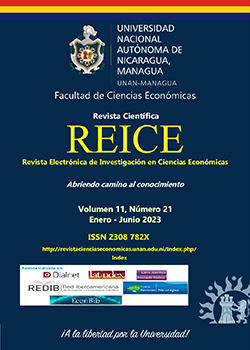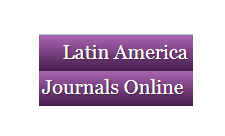Ecological and economic aspects of soil instability as a result of hostilities and their legal consequences
DOI:
https://doi.org/10.5377/reice.v11i21.16550Keywords:
soil instability, restoration of the combat zone, environmental impacts, bioremediation, soil monitoring, innovative methods of soil restoration, ecosystem services, payments for ecosystem servicesAbstract
The spread of armed conflicts threatens ecological stability and natural resources, resulting in long-term consequences for ecosystems and human livelihoods. The article researches examine the eco-economic aspects of soil instability due to hostilities and identify their legal consequences. There is the impact of wartime conflicts on the ecological state of soils and the economy, explains the causes and consequences of these disruptions, and discusses the importance of addressing these issues in the context of sustainable development. Specifically, the article explores the consequences of armed conflicts on soil fertility, groundwater contamination, the spread of pollution in the environment, and the depletion of natural resources. It also considers the legal aspects and international norms that regulate the use of weapons and the impact of armed conflicts on the environment. Soil instability due to hostilities is one of the pressing problems of the modern world, which has significant eco-economic consequences. In the military conflict zone, where heavy military equipment, explosives, and other means of warfare are used, the surrounding environment, including soil, is severely impacted, leading to its degradation and disruption of natural processes.
Downloads
References
Adhikari, R., Hartemink, A. E. (2016) Linking soils to ecosystem services - A global review. Geoderma, 262, 101-111.
Amundson, R., Jenny, H. (1991). The place of humans in the state factor theory of ecosystems and their soils. Soil Science Society of America Journal, 55(5), 1352-1358.
Bai, Z. G., Dent, D. L., Olsson, L., Schaepman, M. E. (2008). Global assessment of land degradation and improvement: 1. Identification by remote sensing. International Soil and Water Conservation Research, 40(3), 232-238.
Bautista-Capetillo, C., Ojeda-Benítez, S., Peña-Saldivar, E., Herrera-López, S., Beltrán-Morales, L. F. (2018). Effects of land degradation on soil organic carbon and ecosystem services in arid and semiarid ecosystems of Mexico. Land Degradation & Development, 29(7), 2151-2160.
Berehovyi, V. M. (2022). Otsinka ekolohichnykh zbytkiv zavdanykh zemelnomu fondu Ukrainy pid chas viiny [The assessment of environmental damage caused to the Ukrainian land fund during the war], Ph.D. dissertation, Doctoral dissertation, National Aviation University (in Ukrainian)
Blum, W. E. H., Nortcliff, S. (2009). Soil degradation: Definition and description. In: Blum W.E.H., Nortcliff S. (eds) Soil Protection and Soil Erosion Research for the Sustainable Development and Conservation of Mountainous Mediterranean Agroecosystems. Springer, Dordrecht.
Boardman, J., Vandekerckhove, L., Ellery, W., Du Preez, C. C., Graff, O. J. D., Marais, C., Mbona, N. (2011). Land degradation processes in the Nama-Karoo: Understanding the causes and consequences. Journal of Arid Environments, 75(3), 278-288.
Bronick, C. J., Lal, R. (2005). Soil structure and management: A review. Geoderma, 124(1-2), 3-22.
Chaudhary, V. B., Berhe, A. A., Johnson, M. S. (2018). Impacts of soil erosion on water quality. Current Pollution Reports, 4(3), 212-223.
Costanza, R., d'Arge, R., de Groot, R., Farber, S., Grasso, M., Hannon, B., Limburg, K., Naeem, S., O'Neill, R. V., Paruelo, J. et al. (1997). The value of the world's ecosystem services and natural capital. Nature, 387(6630), 253-260.
Delo.ua (2023). Reclamation of de-occupied agricultural lands: does it make sense to conduct it during wartime? https://delo.ua/business/rekultivaciya-deokupovanix-silgospzemel-ci-je-sens-provoditi-yiyi-pid-cas-viini-416485/
Dregne, H. E. (1991). Global desertification dimensions and costs. In: De Blij H.J., Nijman J. (eds) Geographies of Global Change: Remapping the World. John Wiley & Sons, Chichester.
FAO (2015). Global Soil Partnership: Technical Documents. Food and Agriculture Organization of the United Nations.
Galkin, A., Popova, Y., Kyselov, V., Kniazieva, T., Kutsenko, M., Sokolova, N. (2020). Comparison of Urban Conventional Delivery And Green Logistics Solutions. 2020 13th International Conference on Developments in eSystems Engineering (DeSE), pp. 95-99, http://dx.doi: 10.1109/DeSE51703.2020.9450776.
Gao, X., Liu, Y., Wang, Y., Li, Y., Yang, J., Wu, J. (2018). Soil degradation and its socio-economic impacts in China: A review. Science of the Total Environment, 642, 693-703.
Gholami, L., Keesstra, S., Yin, S., Rahmati, O. (2018). Soil erosion modeling: A review. Catena, 170, 330-345.
Gomiero, T., Pimentel, D., Paoletti, M. G. (2011). Environmental impact of different agricultural management practices: Conventional vs. organic agriculture. Critical Reviews in Plant Sciences, 30(1-2), 95-124.
Hengl T., de Jesus J. M., MacMillan R. A., Batjes N. H., Heuvelink G. B. M., Ribeiro E., Samuel-Rosa A., Kempen B. (2014) SoilGrids1km - Global soil information based on the automated mapping. PLOS ONE, 9(8), e105992.
Kapinos, H., & Larionova, K. (2023). Problems Of Management Of Ukraine’s Sustainable Development In The Conditions Of War. Scientific Journal Modeling the development of the economic systems, (1), 93-103 (in Ukrainian)
Lal, R. (2003). Soil erosion and the global carbon budget. Environment International, 29(4), 437-450.
Lal, R. (2016). Soil health and sustainability: Managing the biotic component of soil quality. Soil Science Society of America Journal, 80(2), 351-359.
Lehmann, J., Solomon, D., Kinyangi, J., Dathe, L., Wirick, S., Jacobsen, C. (2008). Spatial complexity of soil organic matter forms at nanometer scales. Nature Geoscience, 1(4), 238-242.
Liu, B., Xie, Y., Zhang, X., Liu, S. (2018). Global patterns and drivers of urban land change. Science of the Total Environment, 628-629, 536-548.
Muñoz-Rojas, M., Erickson, T. E., Dixon, K. W., Merritt, D. J. (2016). Soil and water degradation in restoration contexts: A study of soil biological properties and hydrological function in degraded and restored woodlands. Science of the Total Environment, 573, 1532-1541.
Nkonya, E., Mirzabaev, A., von Braun, J. (2016). Economics of land degradation and improvement: A global assessment for sustainable development. Springer, Cham.
Odeh, I. O. A., Chittleborough, D. J., McBratney, A. B. (1995). Further results on prediction of soil properties from terrain attributes: Heterotopic cokriging and regression-kriging. Geoderma, 67(3-4), 215-226.
Oldeman, L. R., Hakkeling, R. T. A., Sombroek, W. G. (1990). World Map of the Status of Human-Induced Soil Degradation: An Explanatory Note. International Soil Reference and Information Centre, Wageningen.
Panagos, P., Borrelli, P., Meusburger, K., Yu, B., Klik, A., Lim, K. J., Yang, J. E., Ni, J., Miao, C., Chattopadhyay, N., et al. (2017). Global rainfall erosivity assessment based on high-temporal resolution rainfall records. Scientific Reports, 7(1), 4175.
Prasannakumar, V., Vijith, H., Abinod, S., Geetha, N., Shiny, R., Sreeja, K. G., et al. (2012). Soil erosion assessment in a tropical watershed using GIS and remote sensing. Environmental Monitoring and Assessment, 184(11), 7153-7169.
Reynolds, J. F., Smith, D. M. S., Lambin, E. F., Turner, B. L., Mortimore, M., Batterbury, S. P. J., et al. (2007). Global desertification: Building a science for dryland development. Science, 316(5826), 847-851.
Rockström, J., Steffen, W., Noone, K., Persson, A., Chapin, F. S., Lambin, E. F., et al. (2009). A safe operating space for humanity. Nature, 461(7263), 472-475.
Sanaullah, M., Chabbi, A., Leifeld, J., Bardoux, G., Billou, D., Rumpel, C. (2012). Decomposition of added 13C-labelled plant material in relation to global warming potential. Journal of Plant Nutrition and Soil Science, 175(6), 813-820.
Scherr, S. J., McNeely, J. A. (2008). Biodiversity conservation and agricultural sustainability: Towards a new paradigm of 'eco-agriculture' landscapes. Philosophical Transactions of the Royal Society B: Biological Sciences, 363(1491), 477-494.
Shukla, M. K., Lal, R., Ebinger, M. (2006). Determinants of soil quality in reclaimed mine soils. Soil Science Society of America Journal, 70(4), 1406-1414.
Smerichevskyi, S., Kniazieva, T., Kolbushkin, Yu., Reshetnikova, I., Olejniczuk-Merta, A. (2018). Environmental orientation of consumer behavior: motivation component. Problems and Perspectives in Management. Vol 16, No 2. pp. 424-437. http://dx.doi.org/10.21511/ppm.16(2).2018.38.
Sojka, R. E., Upchurch, D. R., Borlaug, N. E. (2013). Agriculture's role in managing surface water quality. Journal of Soil and Water Conservation, 68(1), 5A-10A.
Stoorvogel, J. J., Smaling, E. M. A. (1998). Assessment of soil nutrient depletion in sub-Saharan Africa: 1983-2000. Report 28. Winand Staring Centre, Wageningen.
Ukrinform. (2023). The Russians caused damage to the Ukrainian environment to the tune of $1.9 trillion ttps://www.ukrinform.ua/rubric-ato/3666430-rosiani-zavdali-skodi-ukrainskomu-dovkillu-na-19-triljona.html
van der Mensbrugghe, D., Osorio-Rodarte, I., Burns, A. (2012). Land degradation and trade in factors of production: Implications for agricultural land use. Ecological Economics, 76, 90-96.
van Lynden, G. W. J., Oldeman, L. R. (1997). UNDP-UNSO Digital Soil Map of the World. Revised Edition. World Soil Resources Report 90. International Soil Reference and Information Centre, Wageningen.
Verheijen, F. G. A., Jones, R. J. A., Rickson, R. J., Smith, C. J. (2009). Tolerable versus actual soil erosion rates in Europe. Earth-Science Reviews, 94(1-4), 23-38.
Viscarra Rossel, R. A., Brus, D. J., Lobsey, C. (2009). Potential of data mining methods for soil nutrient prediction. Computers and Electronics in Agriculture, 68(2), 166-174.
Vlek, P. L. G., Le, Q. B., Tamene, L. (2008). Land degradation in Vietnam: Causes, impacts, and options for improved land management. In: Lal R., Sombatpanit S. (eds) Soil Management for Sustainable Agriculture. CRC Press, Boca Raton.
Wang, G., Bai, Z., Dent, D. L., Xu, D. (2016). Soil erosion and conservation in global agricultural landscapes: A review. Journal of Integrative Agriculture, 15(11), 2454-2468.
West, T. O., Marland, G. (2002). A synthesis of carbon sequestration, carbon emissions, and net carbon flux in agriculture: Comparing tillage practices in the United States. Agriculture, Ecosystems & Environment, 91(1-3), 217-232.
Wischmeier, W. H., Smith, D. D. (1978). Predicting Rainfall Erosion Losses: A Guide to Conservation Planning. Agriculture Handbook No. 537. U.S. Department of Agriculture, Washington, D.C.
Wu, J., Wang, Z., Hu, Y., Zhang, M., Shi, P. (2015). Soil degradation: A problem threatening the sustainable development of agriculture in Northeast China. Sustainability, 7(7), 7916-7930.
Xu, X., Zou, B., Huang, J., Huang, Z., Hu, Y. (2018). Global soil acidification: Distribution, severity, and impacts. Pedosphere, 28(4), 635-660.
Xue, Y., Gao, G., Feng, M., Liu, G., Guo, H. (2018). Changes in soil organic carbon and total nitrogen stocks under different land use types in a small catchment on the Loess Plateau. Catena, 166, 113-121.
Yang, W., Kanae, S., Oki, T., Koike, T., Musiake, K. (2003). Global potential soil erosion with reference to land use and climate changes. Hydrological Processes, 17(14), 2913-2928.
Yuan, Y., Zhan, J., Zeng, G., Liang, J., Huang, B., Li, X. (2018). Soil erosion under different land uses in a hilly watershed of southern China: Rates, patterns, and influencing factors. Catena, 162, 110-118.
Zhang, C., Chen, L., Zhang, J., Tang, G., Fu, B. (2016). Land degradation and ecosystem services in the Loess Plateau, China. Land Degradation & Development, 27(4), 951-961.
Zhang, J., Zhang, X., Cai, D., Li, Q., Zhang, X., Huang, C., et al. (2017). Soil erosion and its driving factors on the Loess Plateau in China. Catena, 151, 150
Downloads
Published
How to Cite
Issue
Section
License
Copyright (c) 2023 Revista Electrónica de Investigación en Ciencias Económicas

This work is licensed under a Creative Commons Attribution-NonCommercial-ShareAlike 4.0 International License.



